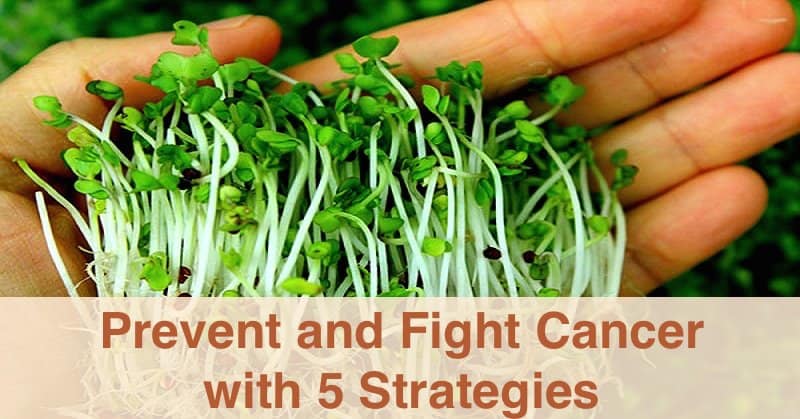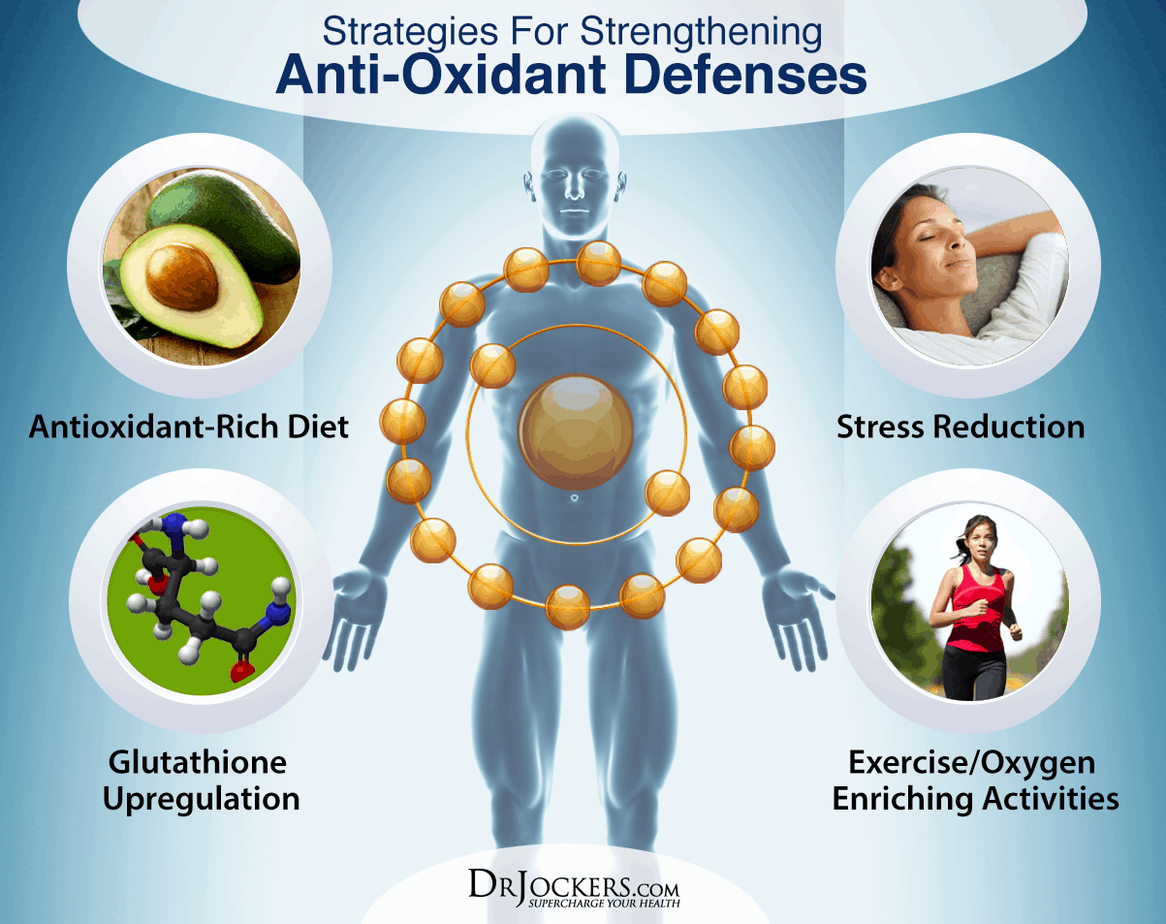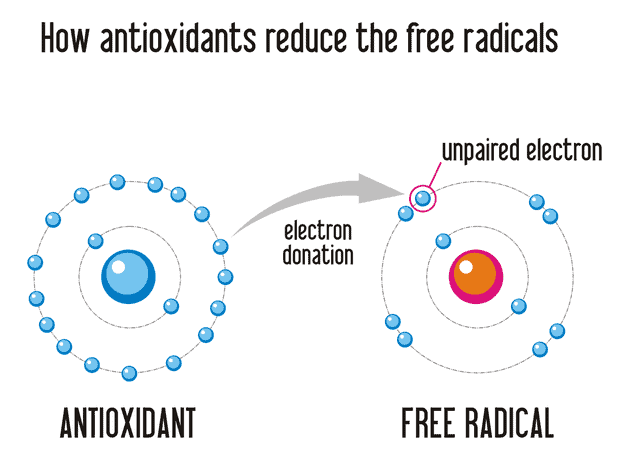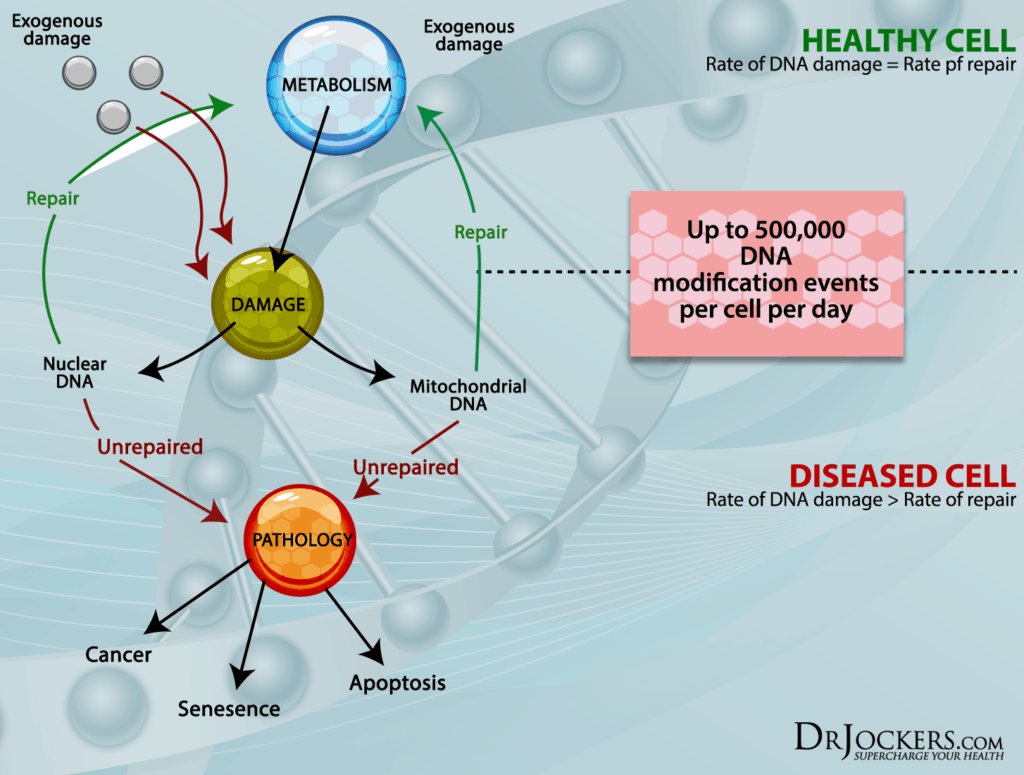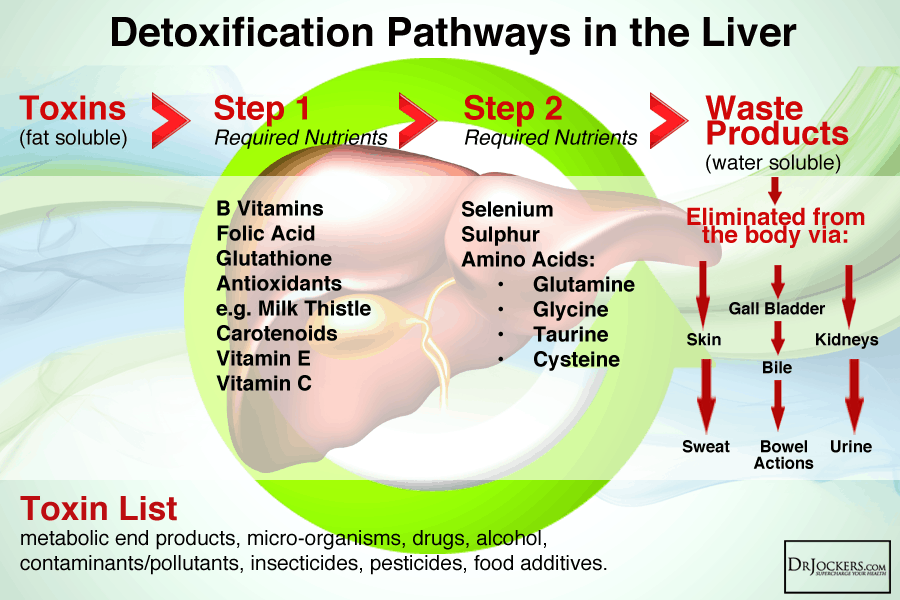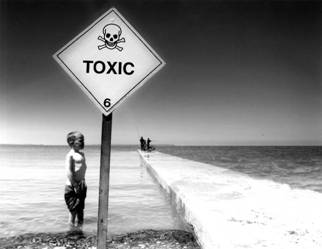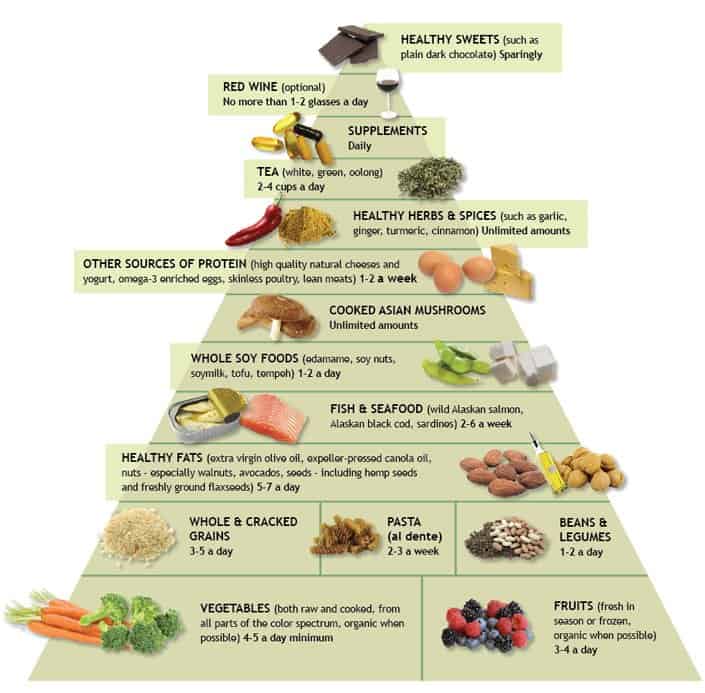Prevent and Fight Cancer with 5 Strategies
We all must take clear and certain steps to prevent and fight cancer, for the risk that it comes knocking on our doors is significant and can not be ignored. Here are five strategies to get you on your way.
ACCORDING TO Cancer.gov, the lifetime risk of developing cancer for Americans is 39%. This means that there’s a near 40% chance that you and those you know and love will get cancer.
Too risky for me, so I’m doing my best to avoid this frightening disease, and I want you to do the same; hence this article and the five strategies I’m going to share with you that I’ve cultivated from the work of five doctors: Dr. David Jockers, Dr. Kelly Brogan, Dr. Andrew Weil and Dr. Michael Greger.
Together, they will help us understand the need for antioxidants, specialized nutrition, mindset and detoxification in order to prevent and fight cancer.
In this article, you’ll discover:
- Why cancer cells are so harmful;
- How antioxidants can help us prevent and fight cancer;
- How you can repair DNA damage;
- Why detoxification is a necessary strategy;
- What’s the deal with Nrf2 signaling;
- How to reduce chronic inflammation; and
- Why cruciferous veggies need to be a big part of your cancer-fighting diet.
Let’s dive in and first examine why we get cancer and what makes it so harmful to us.
The basic reason that people get cancer is because of a malfunction in cellular regulation. This happens when cancer cells — which are always present in our bodies — are not recognized by our immune system and are thus able to multiply.
As they develop and accumulate, cancer cells develop unique attributes that enable them to ignore the signals sent by the body telling them when and when not to grow, or even when to die.
Dr. David Jockers tells us that the three major cancer cell attributes that make them so harmful are:
- The inability to regulate the cell cycle — Instead of responding to certain signals that govern normal cell growth, division and death, cancer cells develop what is referred to as metabolic autonomy which allows them to self-stimulate growth (1).
- Biological deafness — Cancer cells lose their ability to “communicate” with surrounding tissues, resulting in the incapacity for self-regulation and invasive tumor growth.
- Lack of function — Rather than acting like normal cells that transform themselves from an undifferentiated state, whereby new cells have no specific function, to differentiated, specialized cells (such as skin cells, liver cells, etc.), cancer cells never evolve from their immature, undifferentiated state. In this underdeveloped state, cancer cells continue to divide and spread, resulting in tumor growth and eventually metastasis (spreading throughout the body).
Dr. Jocker says the problem with cancer cells that are not kept in check by our immune system is that their DNA damage and cellular dysregulation become more prevalent as the cancer cells grow and multiply, triggered by these prominent mechanisms:
- Poor activation of antioxidant defense systems
- Inhibited ability to repair cell damage
- Chronic exposure to toxic chemicals combined with an inhibited ability to properly detoxify the body
- Chronic inflammation
With that fundamental conception in place, let’s now turn to our five strategies to prevent and fight cancer.
1. Consume Antioxidants to Prevent and Fight Cancer
One of the most prominent epigenetic influences on DNA damage is oxidative stress. (An “epigenetic” change is a regular and natural occurrence, but can also be influenced by several factors including age, the environment/lifestyle, and disease state, which I’ve written about here and here.)
The production of unstable molecules called free radicals occurs when your body is exposed to physical or chemical stress, and will damage cells if not controlled by antioxidants. As you can see by the illustration below, an antioxidant “donates” one of its electrons so it an pair with the lost electron creating the free radical, making it stable and disabling its ability to cause damage. (More about free radicals here.)
People with cancer often have high levels of stress and poor dietary nutrient intake bereft of antioxidants, and consequently suffer from inhibited antioxidant defense systems resulting in uncontrolled cell damage.
Consume An Antioxidant-Rich Diet
Whether you have cancer or seek to minimize your risks of getting cancer, one important strategy is to strengthen your antioxidant defenses with an antioxidant-rich diet, glutathione upregulation, stress reduction and activities that increase blood oxygenation.
Eating more antioxidant-rich rich foods can significantly boost your body’s ability to fight inflammatory diseases, including cancer. Such a diet should eliminate foods you may be allergic to (eggs, gluten and peanuts are common suspects), substantially lower sugar intake (recommended alternatives), substitute healthy fats for unhealthy ones (here’s a guide), and increase your intake of antioxidant rich vegetables like your life depends on it, cause it just might. (Here’s a list of 33 antioxidant-rich foods and supplements.)
Upregulate Your Glutathioine
In a biological context, to “upregulate” means, for instance, that a cell will increase the quantity of a cellular component, such as RNA or protein, in response to an external stimulus. (2) Thus, Dr. Jockers’ advice to “upregulate your glutathione” means that you should increase the presence of this most important antioxidant in your body.
Glutathione is considered the most important antioxidant in the body because it has a powerful antioxidant effect itself, but also helps regulate the activity of many other antioxidants. You can boost your glutathione levels by eating foods rich in the amino acids glycine, glutamic acid, and cysteine as they are chemical precursors used to make glutathione (here’s a list).
Supplement sources include glutathoine itself (use the liposomal version), alpha lipoic acid (ALA), flavonoids from fruits and vegetables, and magnesium. But the best and least expensive to boost your glutathione levels is by taking N-acetyl cysteine (NAC). NAC replenishes intracellular levels of glutathione, helping to restore cells’ ability to fight damage from reactive oxygen species. (3)
Reduce Your Stress
Chronically high stress levels will place the body in a constant state of tension and as a result the body produces an abundance of free radicals. Stress reducing strategies such as positive visualization, laughter, proper hydration, and reducing caffeine intake can help.
Dr. Jocker highly recommends supplementing with magnesium as a stress reduction tactic and uses his Brain Calm Magnesium in powdered offered here for $35 for a 60-day supply. Amazon.com has a similar product called Triple Calm Magnesium; a 60-day supply of these capsules costs $23.
Although I have no gripe with helping to reduce stress with magnesium, I’d be remiss not to remind readers that there’s a whole category of systemic stress relieving supplements called “adaptogens” that need to be considered in any stress reducing regiment. Amazon has many to choose from, such as Ashwaganda, Siberian ginseng, Cordyceps, and Rhodiola Rosea — all adaptogens can be found as powders, tinctures or capsules.
I’ve written several articles about how to deal with stress, and want you to know about an informative article written by Dr. Kelly Brogan entitled, What Is Your Greatest Cancer Risk?
Kelly Brogan, M.D. is a Manhattan-based holistic women’s health psychiatrist, and author of the NY Times Bestselling book, A Mind of Your Own. I’m straying from the antioxidant angle on stress here, but I want you to contemplate Dr. Brogan’s pertinent points about how stress can affect your body’s capacity to withstand cancer:
- Illness is, in part, an emotional expression of maladaptive stress-response habits.
- Unexpressed anger can drive illness; moreover, cancer patients tend to deny and repress conflicting impulses and emotions to a higher degree than to other people.
- Research has supported the ability to predict with 75-78% accuracy those that have clinical evidence of cancer or who have died from it based on measures of repressed anger and long-lasting hopelessness.
- True prevention looks more like dedicated self love.
- Practice radical acceptance.
If any of this resonates with you, I recommend that you read Dr. Brogan’s article.
Enrich Your Blood Oxygenation
You can increase your blood oxygenation through exercise or hyperbaric oxygen therapy; both can activate genetic pathways that increase antioxidant defenses in the body.
One of the most critical antioxidant pathways activated by this strategy is the Nrf2 pathway which plays a major role in glutathione production. I wrote about Nrf2 in Do You Really Need Antioxidant Supplements? Among the many points made about Nrf2 in that article, I wrote:
Nrf2 has attracted great research interest as being a possible gateway for prevention or cure of multiple diseases ranging from neurological and cardiovascular disorders to cancers, with Pubmed.org showing 5,158 Nrf2-related publications as of April 10, 2015.
In his cancer article, Dr. Jockers addresses Nrf2 more fully in the context of detoxification, which I’ll get to below.
2. Prevent and Fight Cancer by Repairing DNA Damage
Cell damage happens every day. That’s not the problem. The problem occurs when the damage exceeds your body’s capacity to repair it, which is mainly regulated by DNA repair enzymes. DNA repair enzymes are susceptible to the same free radical damage as DNA, which reinforces the importance of antioxidant strategy covered above.
The risk of developing cancer can be significantly reduced through an increase of our dietary intake of antioxidants while also implementing strategies to support the body’s innate antioxidant defenses. And if cancer has already developed, these same strategies can be implemented to slow cancer development and prevent progression to a more aggressive form, says Dr. Jockers.
The DNA repair process is managed by the immune system. When DNA damage occurs in a cell, the immune system must analyze the cell and decide how to treat it. The immune system will attempt to repair the damaged DNA by recruiting DNA-repair enzymes, but if the damage is extensive, the cell will often be tagged for destruction.
Having cancer pretty much means that you have an impaired DNA repair processes. A high intake of antioxidants has been shown to protect the integrity of DNA repair enzymes while consumption of L-carnitine, Zinc, and the b-vitamins 6, 12, folate, and niacinamide has shown to increase the number of repair enzymes in some cases (4, 5).
DNA repair enzymes can also be supported by improving detoxification pathways. This further reinforces the use of Nfr2 and glutathione boosting strategies I touched on above. By aiding in the elimination of toxins you drastically reduce the presence of free radicals created by them and therefore spare your DNA repair enzymes.
So, let’s talk about detoxification.
3. Prevent and Fight Cancer Through Enhanced Detoxification
Our bodies are designed to detox. If we couldn’t do this, we’d soon die. The problem is that our detoxification capabilities are being overwhelmed by living in a toxic world.
In today’s environment we’re constantly exposed to toxins in our food, water, and environment. There are thousands of these chemicals, pesticides, heavy metals, etc. that you’re exposed to every day. Several hundred of them can be detected in almost everyone.
Several systems in the body play a role in the disposal of toxins. Although avoiding them in the first place is the best strategy, toxins cannot be 100% eliminated from our diet or environment. Luckily, properly supporting our body’s detoxification mechanisms can ensure that any toxins we ingest are neutralized and disposed of before they become a problem.
In the case of cancer, removing toxins from the body will drastically increase our healing potential. One of the most powerful ways of increasing your defenses against toxins is optimizing the health of your digestive tract, liver and kidneys.
Improve Your Digestion
The digestive tract is a primary immune system defender. Everything we ingest must be processed by the digestive system.
The lining of our gut is filled with more bacteria than cells in our entire body. For optimal health, it is important to maintain a healthy balance and diversity of these bacteria. A healthy microbiome not only protects us from toxins but actually has the remarkable ability to take toxins that we consume and turn them into healthy nutrients.
Read more about your microbiome
Additionally, it is important to make sure you are having regular bowel movements at least two to three times per day (assuming you’re eating this many meals each day), as this is a major way of eliminating toxins. (The simplest way to eliminate more is to consume fiber and water.)
Ensure Your Liver and Kidney Function Are Optimized
The liver and kidneys are two of the most powerful eliminators of toxins in the body. The liver is responsible for a series of reactions that convert nutrients to usable forms, neutralize toxins, and mobilize toxins to the urine (via the kidneys) and bile for excretion.
The detoxification process of the liver works in three phases and for effective detoxification, and all three phases must be supported by proper nutrition. The following illustration walks you through the liver’s detoxification pathways:
Nutrients that support Phase I detoxification often seem to also support Phase II. The most effective nutrients for Phase I and II detox support are calcium-d-glucarate (6) sulfur compounds (cysteine, methionine, sulforaphane), glutamine, ginger, milk thistle, glutathione, curcumin, magnesium, and EGCG (7).
Phase III detoxification is improved significantly with the inclusion of dandelion extract, fenugreek, and fennel. Several of these nutrients also stimulate bile flow, which is considered a crucial final step in liver detoxification as some toxins are eliminated through the bile.
Improved Nrf2 Signaling Supports the Liver and Kidneys
Yes, we’re back to Nrf2. Your liver and kidneys can be supported further by improving NRF2 signaling and consuming nutrients that can bind toxins in the blood (8). Nrf2 is responsible for the upregulation of powerful antioxidant and detoxification genes.
There are a wide variety of nutrients that enhance NRF2 signaling such as glucorophanin, turmeric, and green tea extract. To help bind toxins in the blood, chlorophyll rich foods such as wheatgrass or chlorella have shown to be beneficial.
Other considerations to take into account when detoxing high levels of toxins are adequate water consumption, consistent exercise and intermittent fasting. A higher than normal hydration level may be necessary to aid the elimination of toxins through urine and sweat. Dry saunas are excellent.
Exercise is important because it increases nutrient absorption and mobilization of lymph. Intermittent fasting may aid in the detoxification process by allowing more time between meals for the body to devote energy to such processes.
One of these articles on exercise may inspire you:
Click for exerciseYou may also want to check out Dr. Jockers’ Cancer Cleanse Program. Here’s his introduction to it:
My most extensive article to date on detoxification is a three-part series, beginning with Why You Must Detox All The Time, Part 1. If you’re serious about detoxification, you’ll be glad you’ve read all three articles in the series.
4. Prevent and Fight Cancer by Reducing Chronic Inflammation
The antioxidant-rich diet discussed above can do a lot to reduce chronic inflammation, now considered to be a major cause or amplifier of many chronic diseases. Inflammation can also be mitigated by:
- Optimizing vitamin D levels;
- Consumption of omega-3 fatty acids; and
- Dietary inclusion of turmeric or curcumin (9, 10, 11).
Dr. Jockers recommends the following for his chronically inflamed patients:
- Anti-Inflammatory Nutrition Plan: Adopt a low-sugar, high-fat diet that also includes high amounts of vegetables, especially leafy green and fibrous ones.
- Avoid the Most Common Inflammatory Foods: Processed foods, corn, peanuts, cottonseed oil, canola oil, unfermented soy, gluten, grain-fed meats and dairy)
- Maintain a Healthy Gut: Improper digestion and leaky gut syndrome can lead to allergies and autoimmune reactions that significantly inflame the body.
Check out Dr. Andrew Weil’s famous Anti-inflammatory Food Pyramid and note how you can improve your diet:
If this is of interest to you, read my article, Why Dr. Weil’s Anti-inflammatory Food Pyramid May Be the Best Diet.
Before we leave the inflammation topic, one last word (or a few of them) about Nrf2.
By now, you have a sense that activation of the NRF2 pathway is extremely valuable when dealing with cancer as it plays a role in healthy inflammation response, blood sugar regulation, detoxification pathways, and antioxidant defenses. Additionally, activation of the NRF2 pathway can boost traditional cancer therapies, says Dr. Jockers.
He’s sufficiently sold on the value of Nrf2 that he’s formulated a supplement called NRF2 Power, which he says contains some of the most powerful nutrients in clinical doses for activating this pathway. I checked it out and observed that it contains the following ingredients:
- Glucoraphanin — a glucosinolate found in broccoli, cauliflower, and mustard (especially sprouts)
- Turmeric extract — derived from a perennial plant (Curcuma longa) of the ginger family
- Green tea extract — powdered tea leaves rich in EGCG (epigallocatechin gallate), a powerful anti-oxidant
- Pterostilbene — similar to resveratrol or piceatannol, is a component of blueberries and grapes, and is linked to improved cognition, reduced cholesterol and glucose, and increased insulin sensitivity
- Black pepper extract — often used to make other compounds more bioavailable
NRF2 Power costs $55, and my immediate thought was that I bet you could by the ingredients cheaper separately.
Turns out that you probably can not, even if instead of buying Glucoraphanin you instead opted for its near equivalent, broccoli sprouts. A study by John Hopkins University School of Medicine showed that the bioavailability of sulforaphane from Glucoraphanin supplements is equal to that of broccoli sprouts. (12)
(Sulforaphane is a potent natural inducer of Phase 2 detoxification enzymes, which eliminate many types of free radicals.)
After reading the John Hopkins study, I clicked through to get prices of the components in Dr. Jockers’ NRF2 Power and quickly observed that in this case, the integrated product is less expensive than sourcing the ingredients separately.
For instance, Thorne Research makes a Glucoraphanin product called Crucera-SGS that absent of the other ingredients in Dr. Jockers’ NRF2 Power still costs nearly as much, $53. You could instead opt for broccoli sprout extract in the price range of $11 to $30, but even if you chose the low priced broccoli sprout extract to substitute for the expensive Glucoraphanin, by the time you add in the costs of turmeric (or curcumin), green tea extract and pterostilbene, you’ll be way above Dr. Jockers’ $55.
All that said, how about a way to get the benefits of Glucoraphanin without busting your supplement budget? For this approach let’s turn to one of my favorite doctors, the irrepressible Dr. Michael Greger, the maestro behind NutritionFacts.org and author of How Not To Die.
But first,
5. Prevent and Fight Cancer by Making Your Own Glucoraphanin
What I’m about to tell you is summarized nicely by Dr. Greger himself:
Adding myrosinase enzymes in the form of even a pinch of mustard powder to cooked cruciferous (cabbage-family) vegetables like kale, collards or Brussels sprouts can offer anti-cancer sulforaphane levels comparable to raw, removing the necessity to pre-chop for maximum health benefits
Here’s what you’re going to learn in the following six minute video:
Sulforaphane is a star. It’s the main active ingredient in broccoli, and can protect our brain, protect our eyesight, protect against free radicals, induce our detoxification enzymes, help prevent cancer, as well as help treat it, and seems to target breast cancer stem cells.
Raw is the way to go. We get dramatic suppression of cancer cell growth from raw broccoli, cauliflower, Brussels sprouts.
If you cook it, activate the enzyme. In raw broccoli, the sulforaphane precursor — Glucoraphanin — mixes with the enzyme, called myrosinase, once it’s chewed or chopped, and given enough time before consuming. Once heated, however, the enzyme is destroyed. And with no enzyme, there’s no sulforaphane production.
Use the “hack and hold” technique — If you chop the broccoli, Brussels sprouts, kale, collards, or cauliflower first, and then wait 40 minutes, then you can cook them all you want without destroying the enzyme, myrosinase. The sulforaphane is already made, the enzyme is already done doing its job, so you don’t need it anymore.
Don’t use frozen cruciferous vegetables — Unless you add mustard. Before they’re frozen, they’re flash-cooked, killing the enzyme. What you can do is put the enzyme back in by sprinkling some mustard powder on your cooked frozen broccoli, which will then churn out sulforaphane, the precursor to Glucoraphanin. Just a pinch of mustard powder will do the trick!
Sound crazy? The video will explain:
Your Takeaway
Before you leave this page, scroll back up and read the “Bottom Line” entry for each of the five strategies to prevent and fight cancer.
What then should be impressed upon you is this:
- You need a anti-inflammatory diet is rich in antioxidants.
- Supplement such a diet with antioxidants, particularly glutathione and sulforaphane and their precusors, such as alpha lipoic acid, sulphur and glucoraphanin.
- Get your blood oxygenated via exercise.
- Ensure that you’re properly detoxifying.
So, make a list of what you can do, and then start with the one for which you have the least resistance. Once that’s a habit, go to the next one on the list.
Share this article with your friends and family and support one another in your quest to be cancer free!
Last Updated on February 7, 2024 by Joe Garma

